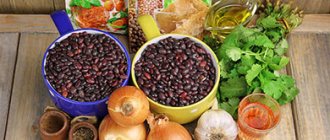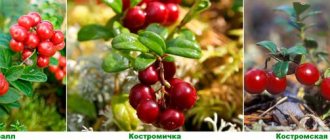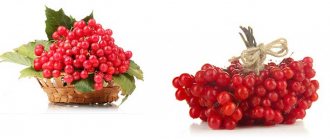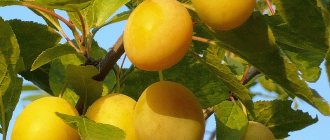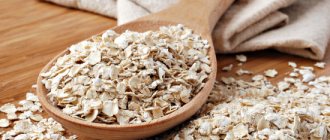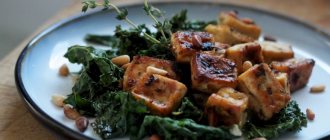Red Ribes. Description. Where does it grow
Natural thickets of red currant are found in forests throughout Eurasia. This is a low (1-2 m) perennial shrub belonging to the Gooseberry family, Currant genus.
The leaves are 3-5-lobed, arranged alternately on the branches. They have a long petiole. The smell is pleasant and specific. The flowers are small, pinkish or lilac-lilac in color, collected in a brush. Red berries are collected in clusters.
red currant is a member of the Gooseberry family, Currant genus
Chemical composition. Vitamins and microelements
The chemical composition of the fruit depends on the plant variety, ripeness, conditions and area of cultivation. On average they contain:
- water;
- proteins;
- fats;
- carbohydrates;
- alimentary fiber;
- tannins;
- pectins;
- anthocyanins;
- organic acids: malic, citric;
- vitamins: β-carotene, A, B1, B2, B4, B5, B6, B9, PP, C, E, H, K;
- macro- and microelements: sodium, calcium, magnesium, phosphorus, iron.
In addition, the fruits contain large amounts of silicon, cobalt, manganese, copper, molybdenum, and zinc. The level of bioactive substances in the pulp, skin and seeds is slightly different; whole fruits are healthier than juice or smoothies.
The buds contain essential oil consisting of:
- terpenes and sesquiterpenes;
- D-pinene;
- caryophyllene;
- phenols;
- anthocyanins, catechins, ellagitannins, procyanidins;
- flavonoids.
The leaves contain ascorbic acid and essential oil.
Nutritional value and calorie content
The benefits of red berries have been noted in nutrition, so they are recommended for weight loss and are used in the production of canned baby food and for people suffering from cardiovascular diseases and diabetes.
The plant is rich in glucose and fructose and does not contain sucrose, which is important in the production of dietary products. Fruits and their processed products have a tonic effect, improve appetite, and increase food digestibility.
The calorie content of 100 g of berries is 38.90 kcal, or 162 kJ.
the plant is indicated for use and is useful for all age and gender categories of citizens
What is the difference between red currant and black currant
Many gardeners grow both black and red currants on their plots. The question arises: do the berries of the two bushes differ in anything other than color?
- Black currants contain much more vitamin C. But red currants hold the record for the content of vitamin A in their composition.
- Black currants have a more pronounced aroma and taste much sweeter than red currants.
- Red currants give more juice; squeezing black berries is more difficult.
Thus, black currants are more often used to make desserts, and red currants are more often used to create drinks. The health benefits and harms of red currants are approximately the same as black currants. The medicinal value of both varieties is approximately equal, although the volume of some substances in black and red berries is different.
What are the benefits of red currants for the body of men, women and children?
The beneficial properties of red currant are due to its composition.
Pectic substances:
- regulate cholesterol levels;
- participate in intracellular metabolic reactions;
- increase resistance to allergic factors;
- stimulate wound healing;
- accelerate the treatment of burns;
- have a therapeutic effect on peptic ulcers;
- bind radionuclides and heavy metals.
Red sour berries are capable of:
- quench;
- reduce appetite and regulate lipid metabolism;
- eliminate the feeling of nausea during toxicosis;
- rejuvenate the skin and the entire body thanks to its antioxidant properties.
Women prefer to drink tea from currant leaves and buds for cystitis. The fruits contain a large amount of iodine. Therefore, the product is recommended to be included in the menu for thyroid dysfunction.
The combination of vitamins C and P has a beneficial effect on the regulation of normal capillary permeability and blood clotting. Vitamin P has a sparing effect in relation to ascorbic acid, i.e. the body's need is satisfied by its reserves that are stored in organs and tissues.
Fruits thanks to vitamin C:
- have a powerful antioxidant effect;
- influence the regulation of redox processes;
- provide a tonic and stimulating effect on the overall performance of the body;
- prevent the development of atherosclerosis and the formation of atherosclerotic plaques by reducing the cholesterol content in the arteries;
- increase resistance to infections and other adverse environmental factors;
- participate in the processes of synthesis of collagen, hormones and biogenic amines, and play an important role in iron metabolism.
Not only berries, but also currant leaves have a healing effect on the human body
Not only fruits, but also currant leaves, the beneficial properties and contraindications of which have been studied by herbalists, have the ability to treat:
- atherosclerosis;
- liver diseases;
- respiratory tract pathologies.
Tea has the following properties:
- diuretic;
- sweatshop;
- astringent;
- antipyretic;
- anti-inflammatory.
Therefore, leaves and young shoots are brewed with currant buds for colds in children. There are no age restrictions, which distinguishes tea from synthetic drugs. Delicious currant juice will provide nutrients to the child, especially during transition periods.
Men may be interested in currants as an effective means of increasing potency and rejuvenation. A harmonious combination of bioactive substances makes muscles stronger, more resilient, and stronger. Regular consumption of fruit juice helps remove salts not only from the hollow organs, but also reduces the level of lactic acid in the muscles. Berries reduce the risk of hyperplasia and prostate cancer, early baldness.
Currants are indicated for therapy:
- anemia;
- hypertension;
- bleeding;
- bleeding gums;
- metabolic disorders, including diabetes and obesity;
- gastritis;
- ulcers of the stomach and duodenum.
Compound
Calorie content of 100 grams of red currants is 56 kcal. This amount of berries contains:
- 4.3 g of fiber, which corresponds to 17% of the daily value;
- 68% of the daily dose of vitamin C;
- 14% vitamin K;
- 9% manganese;
- 8% potassium.
In smaller quantities the composition includes:
- vitamins – B1, B2, B3, B6, A, E, folic and pantothenic acids;
- microelements – calcium, iron, magnesium, zinc, copper, selenium.
The medicinal properties of red currants are mainly associated with the presence of a large amount of antioxidants in it. In addition to vitamin C, these are compounds of the polyphenol group.
Harm and contraindications
The plant is not recommended for use if:
- exacerbation of inflammatory and ulcerative diseases of the gastrointestinal tract;
- hemophilia and other bleeding disorders;
- increased stomach acidity;
- GV, because it causes intestinal colic and bloating in infants.
due to the rich chemical composition of the berry, it has a positive effect on human health
Medicinal properties of red currant
Before consuming different parts of the plant, you should find out how red currants are beneficial for the human body and how to use them correctly. The fruits enhance potency, help with cancer and lumps in the mammary gland. They are also useful for intestinal atony and joint rheumatism. In Tibetan medicine, infusion of leaves, buds and berries treats tuberculosis of the lymph nodes. Eating fruits helps you quit smoking faster.
Use in folk medicine
In folk medicine, all above-ground parts of the plant are used. A decoction is prepared from fresh and dried fruits. For it you need to take:
- 1.5 tbsp. l. fruits;
- 1 glass of water.
Pour over the fruits and boil for 30 minutes. Strain. Take 1 tbsp. l. 5-6 times a day. Fresh juice and jelly have similar medicinal properties. They are used for:
- colds;
- swelling;
- stones in the gall and bladder;
- gout;
- poisoning;
- polyarthritis;
- allergies;
- eczema.
The decoction has a calming effect on insomnia, headaches, stress, and nervous agitation.
A mixture of berries with sugar, added to buckwheat boiled in water, is eaten to increase hemoglobin, in case of anemia, heavy menstruation. Currant juice or syrup is used to gargle for sore throat, stomatitis, hoarseness, and severe dry cough.
Features of use for certain diseases
The dosage and course of treatment depend on the type of medication and the severity of the disease:
- tincture of dried fruits in water - 1 tbsp. l. 3-4 times a day for diarrhea and fever, to remove water from soft tissues;
- tincture and decoction of leaves - 2 tbsp. l. 3-4 times a day for dropsy, scrofula, colds;
- water infusion of leaves - ½ cup 4-6 times a day for gout, joint pain, rheumatism;
- infusion of young shoots with honey - ½ cup 3 times a day before meals.
As a preventative and vitamin remedy, it is advisable to eat fresh berries during the ripening season.
Currant berries are used in cooking to prepare tasty and healthy dishes
Can pregnant and lactating women eat red currants?
Red currant berries, attractive with a pleasant taste, are recommended to be consumed in small quantities during pregnancy with the permission of a doctor. They help reduce toxicosis, eliminate swelling, normalize digestion, elevate mood, and help get rid of anxious thoughts.
It is advisable for nursing women to add red currants to their diet when the baby reaches four months of age. The reaction of the newborn’s body to this type of vitamin product must be monitored.
Use in cooking
The red currant variety contains a large amount of pectin, and therefore has excellent gelling properties. In cooking, marmalade, marshmallows, jelly, cream for cakes and pastries are made from pectins. Dry juice is used to create semi-finished jelly products and prepare drinks. Puddings and confiture are made from the fresh product.
Sweet and sour berry sauce is a good addition to meat dishes. The fruits are added to adjika and tkemali. They also make wine, liqueur, and tincture.
The benefits of blanks
You can preserve the beneficial and medicinal properties of currants throughout the year only by making preparations from them. For example, red currant compote, the benefits of which are comparable to a decoction of berries, can be stored all winter without losing its healing properties.
Currant jam and jelly help with:
- high blood pressure;
- problems with urination;
- dysbacteriosis;
- dyspepsia.
Currant jam is also beneficial for hypovitaminosis. Thanks to pectins, jam binds and removes toxins, heavy metal salts, and radionuclides.
“Raw” jam is made from fresh fruits ground with sugar. It is used for:
- liver diseases;
- metabolic disorders;
- atherosclerosis;
- hypertension;
- degenerative diseases of the central nervous system;
- bleeding.
Homemade Burgundy wine is made from the berries. To prepare it you need to take:
- 3.2 kg of fresh ripe fruits;
- 2.6 kg granulated sugar;
- 1 liter of good vodka;
- 200 g rose buds;
- 12 liters of cold boiled water.
Rose buds are freed from sepals and stem residues, poured with boiling water and left covered for at least 1 hour. Strain. Berries are poured into a bottle, covered with sugar and filled with rose water, and alcohol is added. The container is closed with a stopper and tied with gauze. The bottle is placed in the sun. When the fruits become discolored, the container is buried in cool sand for ½ hour. When the wine has settled, it is bottled, tightly corked, and stored buried in sand.
Drink 1 glass of wine a day to prevent cancer.
currants are used for cosmetic purposes for skin care, removing freckles and age spots
Calorie content of currants
Black, red and white currants do not differ much in energy value. The calorie content of currants is 46 kcal for every hundred grams of ripe berries. The calorie content of currants in a large glass (250 ml) is 68 kcal. The calorie content of red currants in a glass containing 200 ml is 55 kcal.
Fresh currants have especially beneficial properties. It is enough to eat 20-30 berries a day and the daily need for ascorbic acid will be completely met. At the same time, the calorie content of black currants is low, which will prevent you from gaining excess weight.
Currants can be frozen to prepare compotes in winter or consumed defrosted. Juices, jams, fruit drinks, compotes and jellies are also prepared from it. Moreover, the calorie content of black currants may increase due to the use of sugar. So, for example, the calorie content of currant jam is more than 240 kcal for every 100 grams of product.
Application in cosmetology
Red currant is an ancient cosmetic product for facial skin care, removing age spots and freckles. Decoctions and infusions from it are used to care for oily and combination skin.
The juice is added to anti-aging masks, and products are prepared to strengthen and grow hair. Vodka infusion is used to treat boils, pimples, and acne. A cream based on bioactive plant substances has a moisturizing, nourishing, healing, and rejuvenating effect.
A decoction of branches and leaves is used for baths for dermatoses, eczema, and psoriasis. Children are bathed in it for scrofula (exudative diathesis) and skin tuberculosis.
Collection, preparation and storage
The berries are harvested as they ripen in July-August. Since currants have a thinner skin, they are picked as a whole bunch. The fruits are sorted and laid out in a thin layer on a sieve or paper to dry in a place protected from direct sunlight and well ventilated. Store in paper or linen bags.
The fruits can be frozen. They are first washed, dried and placed in a container, which is placed in the freezer. Such preparations are stored for 6-12 months, defrosting as needed. Leaves, only the middle ones, are harvested from the beginning of the plant’s flowering until leaf fall. They are dried in the same way as berries. Shelf life - 1.5-2 years. The buds are removed in early spring and preserved with alcohol.
You can grow currants by layering, cuttings or dividing the bush
How to grow a plant at home
The plant can be propagated by layering, dividing the bush, or cuttings. The shrub is light-loving, not picky about soil and moisture. It tolerates planting well in sandy and loamy soils. Planting should be done in September. The hole is dug in advance so that the earth has time to settle and compact. Diameter - 50 cm, depth - 40 cm. There should be a distance of at least 1.5 m between bushes.
The soil around the seedling is thoroughly compacted and 1 bucket of water is poured under each. After this, the circle is mulched, and the cuttings are cut so that only 10-15 cm remain above the surface with well-developed 2-3 leaf buds.
During the flowering period, the plants are watered and weeded. Fertilizers are applied in spring and autumn. To keep the bush healthy and produce a high yield, it is pruned in the spring before the sap begins to flow. Trim frostbitten, shriveled, old branches. Pruning can also be done in the fall.
Application
In summer, red currant berries are eaten fresh, made into juice, compote, fruit drinks, jelly, jelly, marmalade, wine, liqueur, and used to decorate desserts and fruit salads. Currants are frozen, ground with sugar, and jam and confiture are prepared. Currant berries do not lose their medicinal properties after heat treatment, so the jam contains many vitamins and is very useful during the cold season.
Market Analytics
- COVID-19 is changing the rules of the game in the cosmetics market
- Beauty of the future: cosmetic innovations 2020
- New ingredients are the driving force of the cosmetics industry
Convenient search for beauty salons on our website
Beauty salons in Moscow Beauty salons in St. Petersburg Beauty salons in Ekaterinburg Beauty salons in Novosibirsk
Latest blog posts on our website
- Naturecream / Geranium (Pelargonium) oil for skin health and beauty
- Prostye-sovety / Save on a beauty salon: procedures that can be done at home
- Naturecream / Growth Factor - brings back youth?
- Oksana-Lezina / 3 effective abdominal exercises from a fitness instructor for beginners
- Prostye-sovety / Making perfect curls at home
- Prostye-sovety / Which hair removal method to choose
- Naturecream / Wrinkles Puppets
- Naturecream / PEPHA-TIGHT - instant skin lifting
- Naturecream / Blue light - a danger to the skin
- Naturecream / Cocoa Butter – A treat for the skin
Latest forum topics on our website
- Mrs._Smith / Badly sunburned! What to do?((
- Ice / Is it necessary to combine fitness classes with a diet?
- Antonova / What can be used for hair loss?
- Radio operatorKat / Who was on a protein diet?
- Suzanna / Mesotherapy on the face
Other articles in this section
| Cranberry Cranberry is the closest relative of lingonberry; it is a low-growing evergreen shrub with very thin branches that almost spreads along the ground. The shrub blooms in June, and by early autumn the fruits ripen - juicy dark red spherical berries. It is necessary to collect cranberries before the first frost, since sub-zero temperatures lead to the destruction of vitamin C. However, cranberries can easily overwinter and remain on the branches until spring - “snow cranberries” are collected in the spring, after the snow has melted, and they are much sweeter than autumn ones. |
| Schisandra chinensis Schisandra chinensis is a perennial climbing vine that twines around tree trunks and reaches 15 m in height. The fruits of the plant are bright red round berries collected in a cluster, which ripen in September. They have a specific taste: spicy, bitter or sour, sometimes hot. The berries and leaves have a pronounced lemon aroma. Schisandra chinensis is a valuable medicinal plant; all its parts are used in folk medicine: fruits, leaves, bark and seeds. |
| Pomegranate Pomegranate has large spherical fruits, with a diameter of 8 to 18 cm. Inside the fruit, small oblong grains are located in rows. The grain consists of a hard white pit surrounded by sweet and sour, slightly tart juicy pulp, the color of which varies from pink to ruby. The peel is hard, rough to the touch, its color varies from yellowish-orange to dark red. In folk medicine, all parts of the pomegranate are used: seeds, internal white membranes and peel. |
| Cherry Cherry fruits are small rounded drupes of dark red color with a sweet and sour taste. The cherry genus has more than 100 species, among which there is felt or Chinese cherry. Its fruits contain 2 times more vitamin C compared to European varieties. Cherry pulp contains a high content of vitamin PP, which is necessary for the prevention and treatment of cardiovascular diseases, and it is more abundant in dark-colored fruits. So, black varieties of cherries and chokeberries contain the same amount of vitamin PP. |
| Passion fruit Passion fruits are round or oval in shape and, depending on the variety, yellow or purple in color. Its sweet and sour pulp is hidden under a thick shell and contains many seeds; it is very aromatic and juicy. The surface of the fruit can be smooth and shiny or rough with small cracks. The sweetest fruits are the large, wrinkled fruits with dark purple skin. |
| Strawberry Strawberry is a herbaceous plant and reaches a height of about 25 cm. Wild strawberry is quite widespread, it can be found on slopes, sunny slopes, forest glades, hills, clearings and forest edges. It blooms at the end of May and blooms all summer. Fruit ripening occurs from July to September. The strawberry fruit is an incredibly fragrant false berry of red color and small size, which is an overgrown receptacle. The berries appear first in open areas with a lot of sun. They are the smallest, but the sweetest and most aromatic. Then the fruits begin to ripen in clearings and clearings. Strawberries are the last to ripen in the bushes, but they have the largest berries. Fresh and dried wild strawberry leaves are medicinal raw materials. |
| Banana Banana fruits are cylindrical, elongated and crescent-shaped, have a faceted leathery shell and sweet cream-colored flesh. They grow in clusters that can contain up to 300 pieces and weigh from 30 to 70 kg. Bananas grow from 10 to 30 cm in length and weigh from 100 to 300 g. The edible part is the aromatic pulp of a delicate mealy consistency, which accounts for up to 70% of the weight of the fruit. |
| Avocado Avocado fruits range in color from light green to dark, and the skin can be smooth or wrinkled. The pulp is most often greenish, with a tart, nutty flavor, and its delicate consistency resembles butter. In the middle of the fruit there is a hard and large brown seed. |
| Quince Fragrant, large and slightly tart quince is a surprisingly healthy fruit with healing powers. Its fruits have been known to mankind for hundreds of years, and in Ancient Greece, quince was especially revered for its beneficial properties and was considered a symbol of fertility. |
| Guarana Guarana fruits resemble hazelnuts in shape and size. They are covered with a skin on top, which bursts as they ripen. Inside each fruit there are 1 or 2 rounded dark brown seeds surrounded by white pulp. It is these seeds that serve as a source of guaranine, an effective stimulant containing 2 times more caffeine than the coffee beans themselves. They are soaked, washed, dried, fried and ground into a powder that is used to make energy drinks and an ingredient in many weight loss medications. |
